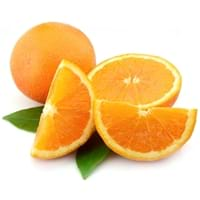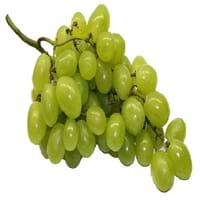Health Benefits
Arthritis treatment, Cancer prevention, Heart care
Cancer prevention, Kidney stone treatment, Prevents constipation, Treatment of alzheimer's disease
General Benefits
Anti-inflammatory properties, Cures cough, Cures fever, Digestive aid, Healing of wounds, Maintains healthy cholesterol level
Digestive aid, Improves eye vision, Maintains healthy cholesterol level, Treatment of migraine
Skin Benefits
Anti-aging benefits, Brightens and lightens complexion, Reduces wrinkles, Treatment of dark spots
Anti-aging benefits, Heals sunburn, Skin rejuvenation, Treatment of dark spots
Hair Benefits
Promotes longer and healthier hair, Protects hair, Rejuvenates scalp, Shiny hair
Prevents hair loss, Regulates hair growth, Treatment of dandruff
Allergy Symptoms
Abdominal cramps, Hives, Itching, Nausea, Wheezing
Anaphylaxis, Asthma, Breathing difficulty, Coughing, Drop in blood pressure, Hives, Skin rash, Stuffy nose, Swelling of mouth, tongue or lips, Wheezing
Side Effects
Allergic reaction, Skin rash, Possibly unsafe during pregnancy
Allergic reaction, Skin rash, Might slow down the process of blood clotting
Best Time to Eat
As a snack in the late afternoon, Eat the fresh ones, avoid mixing with any other foods, don't eat after meal., Morning time (before lunch), Strictly avoid empty stomach
As a snack in the late afternoon, Don't consume at night and before bed, Eat the fresh ones, avoid mixing with any other foods, don't eat after meal., Morning time (before lunch)
Vitamin B5 (Pantothenic Acid)
Vitamin C (Ascorbic Acid)
Vitamin K (Phyllochinone)
Phytosterol
Not Available
Calories in Fresh Fruit with Peel
Not Available
Calories in Fresh Fruit without Peel
Not Available
Calories in Frozen Form
Not Available
Season
Winter
Autumn, Summer
Varieties
Clementine, Dancy, King Mandarin, Murcott, Ponkan, Robinson, Satsuma and Sunburst
Cabernet Sauvignon, Merlot, Pinot Noir, Syrah/Shiraz and Zinfandel
Inside Color
Orange
Light Green
Taste
Sweet-Sour
Sweet-Sour
Origin
South-Eastern Asia
Western Asia, Central Europe
Grows on
Not Available
Vines
Soil Type
Well-drained
Clay loam, Sandy loam
Climatic Conditions
Sunny
Warm
Facts about
- It is known by another name ' Mandarin'.
- Oil extracted from its peel is used in various skin and hair care products.
- Tangerines is also known as the ‘Christmas Orange’ because it is used to stuff kids' stockings..
- If left alone, a grapevine can spread 50 feet and even more.
- There are more than 8,000 varieties of grape worldwide.
- They are available in 7 different colors: red, green, white, black, purple, blue and golden.
Spirits
Not Available
Yes
Cocktails
Not Available
Yes
Other Countries
Brazil, Iran, Italy, Japan, Korea, Morocco, Spain, Turkey
Argentina, Armenia, Australia, Chile, France, Iran, Italy, Portugal, Romania, Turkey, United States of America
Top Importer
China
United States of America
Botanical Name
Citrus reticulata
Vitis vinifera
Synonym
Citrus clementina or Citrus nobilis
Not Available
Subkingdom
Tracheobionta
Tracheobionta
Division
Magnoliophyta
Magnoliophyta
Class
Magnoliopsida
Magnoliopsida
Species
C. reticulata
Vitis vinifera
Generic Group
Citrus fruit
Grape
Compare Tangerine and Grape
It is important compare Tangerine and Grape as both the fruits have a different nutritional value. Their comparison can be done on the basis of their vitamin and mineral content, calories, benefits as well as characteristics, making it easier for us to choose the best fruit for our diet. Their general health benefits are as follows:
Tangerine Benefits: anti-inflammatory properties, cures cough, cures fever, digestive aid, healing of wounds and maintains healthy cholesterol level.
Grape Benefits: digestive aid, improves eye vision, maintains healthy cholesterol level and treatment of migraine.
Fruits are also used as a remedy for various hair problems. The hair benefits of Tangerine are: promotes longer and healthier hair, protects hair, rejuvenates scalp and shiny hair and hair benefits of Grape are: prevents hair loss, regulates hair growth and treatment of dandruff. Some fruits are known to cause allergic reactions. The allergy symptoms of first fruit are: abdominal cramps, hives, itching, nausea and wheezing and the symptoms of second fruit are: anaphylaxis, asthma, breathing difficulty, coughing, drop in blood pressure, hives, skin rash, stuffy nose, swelling of mouth tongue or lips and wheezing. Get sorted Tangerine vs Grape comparison with the help of fruit comparison tool by fruitvs.com.









